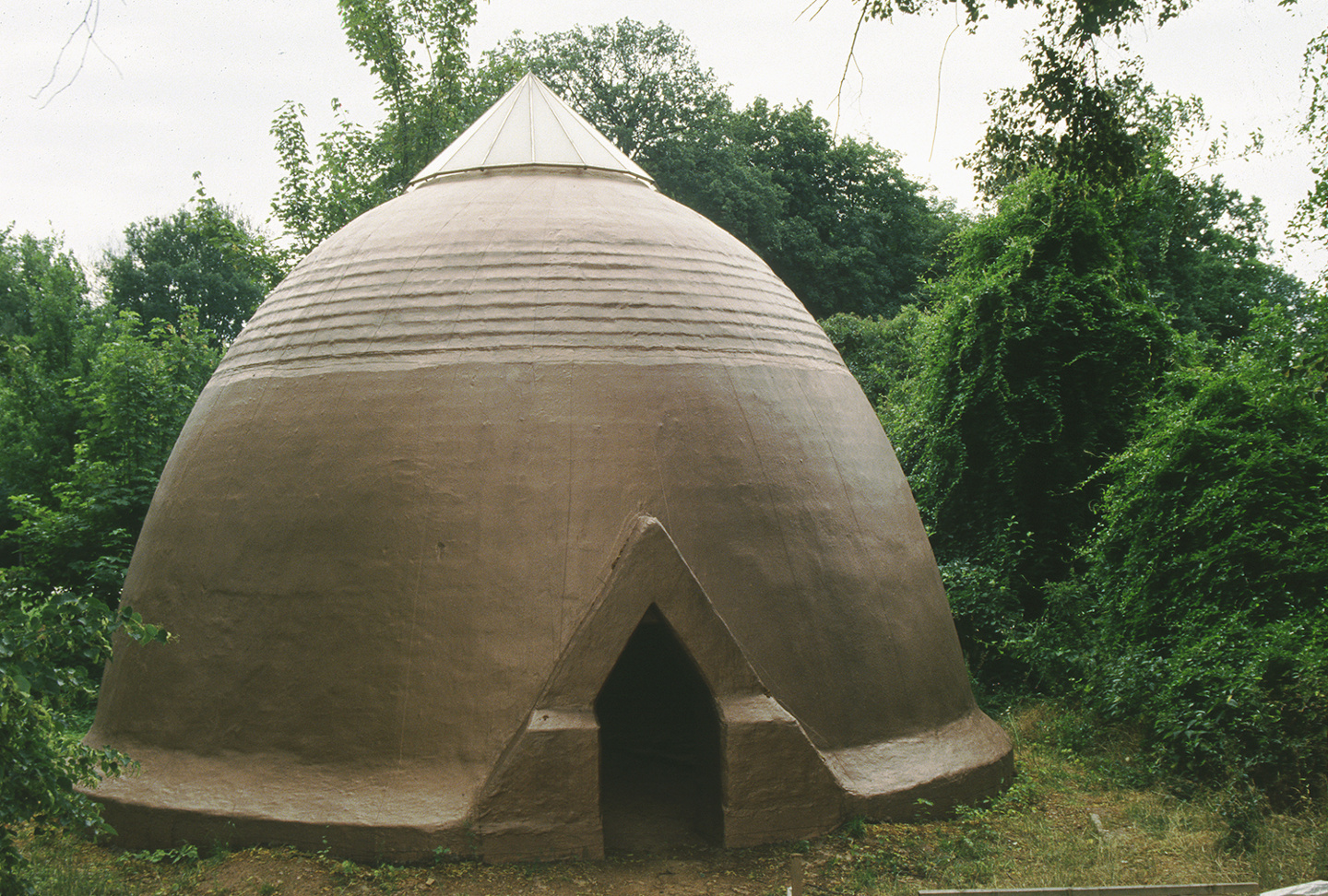An earth dome of Gernot Minke’s making, dating back to the architect’s time at the University of Kassel in the early nineties and still standing outside the art academy today, conjures retro-futurist images of R. Buckminster Fuller’s signature geodesic domes, though the more substantive associations are with much older architectural models such as (to name but one) the magnificent medieval adobe buildings of Djenné, Mali. Minke’s dome was the first to be built utilizing a special rotational guide; subsequently, more than forty domes of his design have been built worldwide.
Minke was born in Rostock, Germany, in 1937. After studying architecture in Berlin and Hanover, he worked as an assistant to pioneering architect-engineer Frei Otto at his Institut für leichte Flächentragwerke (Institute for Lightweight Structures) at the University of Stuttgart—the same Otto whose revolutionary designs for temporary exhibition structures had made such an impact at the Bundesgartenschau (the biennial horticultural show) in Kassel in 1955, of which the first documenta was but a collateral event.
After an influential teaching spell in Ulm—another major node in postwar European design culture—Minke moved to Kassel in the mid-1970s to take up a position at the newly founded university, which in the meantime had managed to attract such like-minded mavericks as sociologist Lucius Burckhardt and philosopher Ivan Illich. This is also when Minke’s singular career as a practicing architect specializing in low-cost housing, eco-conscious building, and earthbound construction techniques came into its own. As the founder of the so-called Forschungslabor für experimentelles Bauen (Research Laboratory for Experimental Building), Minke took a specific interest in building with earth and straw—seemingly unconventional materials in this age of steel, glass, and concrete. (The contrast with the high-modernist brutalism of the art academy’s design by Paul Posenenske could hardly be starker.) Yet it is the ancient history of these materials and the application of artisanal techniques that appeals to Minke in particular, and it is no coincidence that his work has been especially well received in South America: the slow globalization of environmental building philosophies is steadily catching up with this pioneer.
Part of Minke’s contribution to documenta 14 involves bringing the Kassel earth dome back to life, to become a performance venue of sorts, in tune with the architect’s own interest in the acoustic, perhaps even therapeutic uses of architecture. In addition, a new tower, built of adobes (handmade earth blocks) has appeared in front of the dome, accessible to only one visitor at a time.
—Dieter Roelstraete

